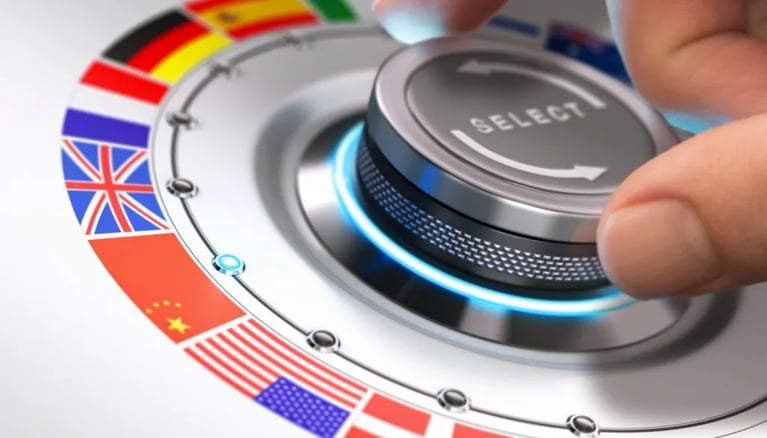In 2017, Google came out with headphones that could translate most languages in real time (kind of). For fans of Douglas Adam’s Hitchhiker’s Guide to the Galaxy series, it was like the Babel Fish made flesh. (For the uninitiated, the Babel Fish is a fictional implantable device in the series. It allows the user to listen to any language and translate it into their native language immediately.)
For travelers looking to ensure they don’t get lost in a country where they don’t speak the language, the technology seems incredibly promising.
But most people familiar with translation software and bots know that they aren’t all that accurate. In fact, translating your favorite song into another language and then back again with any one of these programs almost always produces laughable results.
So if software, including Google Translate, isn’t very good, how do translation headphones stack up? Read on to discover the good, the bad, and the ugly.
Do the translation headphones work?
The first thing you want to know is whether they work or not. The answer isn’t precisely clear-cut and might work for some people, depending on the situation.
For people who would be depending on them for complex translation, they don’t cut it. But for people who are just looking for simple translations when they’re navigating a country or having simple conversations, they can help two people understand each other fairly successfully.
Let’s examine some of the major pitfalls and a few of the positives of the headphones.
They can work if you speak slowly and free of idioms
Like any translation software, the translation isn’t going to be exact. This will likely cause a problem if you’re looking for a conversation or situation with nuance. Suffice to say, they’re not going to translate a university lecture well or help you have a debate with someone.
However, if you speak slowly and simply, and your speaking partner does the same, you can understand one another. Idioms tend to mess up the headphones, which is also true of any translation software. Phrases like “Where is the bathroom?” or “I would like water, please” will probably be your best bet.
There is a substantial lag time
Douglas Adams’ version of the Babel Fish produced instant results. But it seems human technology hasn’t quite caught up with fantasy. Instead, the headphones have a bit of a lag time that many users have found annoying and disruptive.
This is somewhat to be expected since the headphones need to listen to what is being said and process it before translating. But it can be a little bit awkward when conversing with another individual. You’ll no doubt have many awkward pauses between phrases while the headphones think and then translate for you.
Mars will be debuting a new set of translation headphones on the market in the summer of 2018. They promise to reduce the lag time by having one person wear one earbud while the other person puts the other in their ear. This will supposedly greatly reduce lag time.
This is accomplished by having both users hooked up to the same phone and app, allowing it to translate much more quickly.
The upcoming Mars headphones were named an honoree for the Best of Innovation 2018 award at the Consumer Electronics Show (CES).
They don’t support every language
Currently, translation headphones aren’t set up to translate more than the most common languages. Google’s Pixel Earbuds started in 40 languages. The Mars headphones only have a few but have promised 40 more languages to roll out in the next few months.
While this covers many parts of the world, it doesn’t cover everyone. It also doesn’t help if you’re in a country where no one speaks the language and your earbuds don’t have it programmed.
It can’t always deduce when you’re speaking
A translation tool that has trouble telling when you’re speaking is a bit of a problem. While most of the time, it can recognize the human voice; background noise can also confuse it. It may think you’re done speaking before you have finished your thought. It may also think you’re speaking when you aren’t.
This can create frustration, especially when conveying a thought to someone else. In conjunction with the lag time, many people might feel like giving up on trying to hold a conversation.
A bot still does translations
Translations done by human beings are much more accurate than those done by robots. Robots miss key points of conversations and intonation and have various other issues.
According to some users of the Google translation headphones, there have been a few significant issues, specifically in Welsh. One writer noted that road signs in the language had particularly bad translations. The sign for “cyclists dismount” translated in English to “Bladder disease has returned.”
Users have also reported other embarrassing mistakes the headphones have made. While some of these problems can be humorous, they don’t exactly make it clear what the speaker or sign’s original intention was.
Either way, idioms will be incredibly difficult for the headphones to understand, just like with software, and therefore, mistakes are plentiful.
Its accuracy varies depending on the language
For some languages, users have found the headphones to be fairly accurate. For other languages, especially those with grammar structures very different from English, the headphones have a very hard time. This is partly because they translate literally instead of utilizing context. Context is something a human translator would take into consideration.
Asian languages and Eastern European languages seem to be hit the hardest by this issue.
Will they replace human translators?
It is entirely possible that translation headphones could replace human translators in the future, but that’s a long way off at present. For now, they only really work for basic words and phrases, though several companies promise even more advanced technology with the release of upcoming products.
Hiring a human translator is still a much better investment for your business than utilizing an app and its accompanying headphones. Otherwise, you and your employees might be in a world of confusion, lag time, and general frustration.






Comments